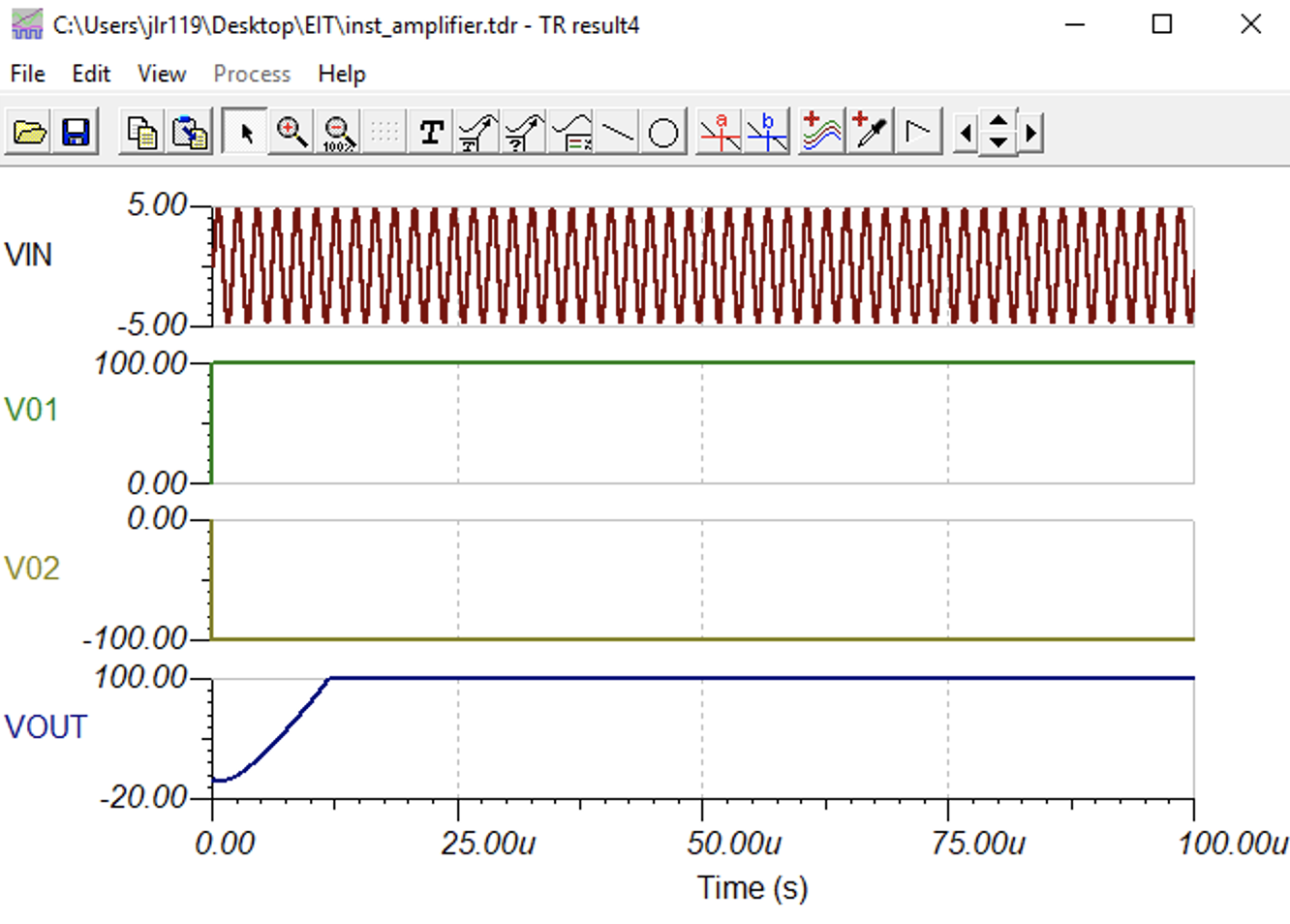Other Parts Discussed in Thread: TINA-TI, , THS3110
Hello,
I am implementing the application 10.2 from the datasheet in Tina-TI, and I am getting a saturation effect. Is there anything wrong with my design here? I've lifted it exactly from the datasheet(Figure 67), though am not getting anything like the suggested output. I am sending in a 4.75V PP sine wave at 500kHz.
Below is a picture of the transient response, and below that the circuit which is a copy of Figure 67 of the datasheet for OPA454.




